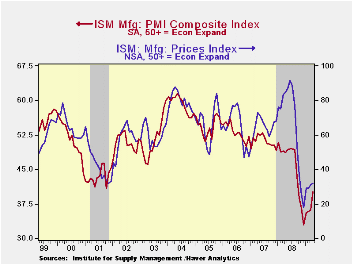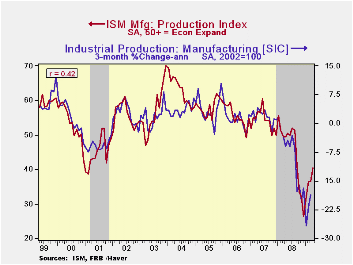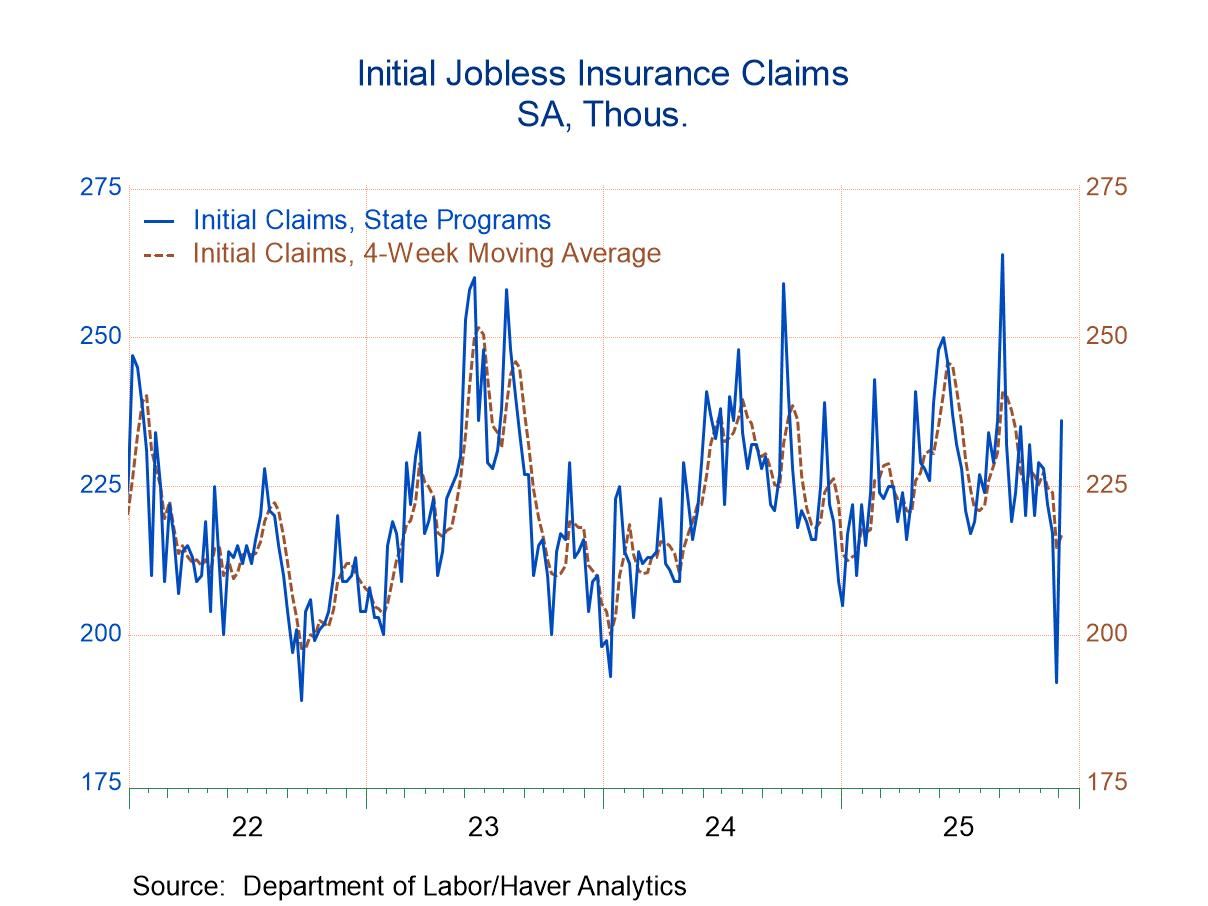 Global| May 01 2009
Global| May 01 2009ISM Index Suggests Modest Slowing Of Factory Sector Downturn
by:Tom Moeller
|in:Economy in Brief
Summary
The manufacturing sector showed a sign of modest improvement following several months of sharp decline in overall activity. The April composite index for the factory sector from the Institute for Supply Management rose to 40.1 from [...]

The manufacturing sector showed a sign of modest improvement following several months of sharp decline in overall activity. The April composite index for the factory sector from the Institute for Supply Management rose to 40.1 from 36.3 in March. The latest figure still indicates a lower level of activity, as does any below the break-even point of 50, but the rate of decline appears to be slowing after having reached its nadir in December. Consensus expectations were for an April reading of 38.0.
The composite index hovered for much of last year near 50, then it fell sharply in October. The production component started its decline in September. That's when factory sector output started what's been a sharp downturn with a 3.6% m/m drop, as reported by the Federal Reserve.
During the last ten years there has been an 84% correlation between the level of the production component of the composite index and the three-month growth in factory sector industrial production. It is appropriate to correlate the ISM index level with factory sector output growth because the ISM index is a diffusion index. It measures growth by using all of the positive changes in activity added to one half of the zero change in activity measures.
Improvement in the April components of the overall ISM index was broad-based. The new orders figure rose to 47.2 which was the highest level since last August. The improvement came as 31% of survey participants reported higher orders versus a December low of 5% while 29% reported lower orders. That was half the percentage at yearend. Even the export order index improved modestly to 44.0 versus the December reading of 35.5. During the last ten years there has been a 53% correlation between the index and the q/q change in real exports of goods in the GDP accounts.
The production component, at 40.4, was at its highest level since last September. A lessened 34% of firms reported lower production, which was near half the level this past December. The gain came despite a heightened rate of inventory decumulation. At another quite-low index level of 33.6, the inventory figure was near the lowest level since 1982.
The separate index of prices paid improved just slightly but it remained near the record low. During the last twenty years there has been a 79% correlation between the price index and the three-month change in the PPI for intermediate goods.
The ISM data is available in Haver's USECON database.
The propagation of regional recessions from the Federal Reserve Bank of St. Louis is available here.
| ISM Mfg | April | March | April '08 | 2008 | 2007 | 2006 |
|---|---|---|---|---|---|---|
| Composite Index | 40.1 | 36.3 | 48.6 | 45.5 | 51.1 | 53.1 |
| New Orders Index | 47.2 | 41.2 | 46.4 | 42.1 | 54.3 | 55.4 |
| Employment Index | 34.4 | 28.1 | 45.8 | 43.2 | 50.5 | 51.7 |
| Prices Paid Index (NSA) | 32.0 | 31.0 | 84.5 | 66.5 | 64.6 | 65.0 |
Tom Moeller
AuthorMore in Author Profile »Prior to joining Haver Analytics in 2000, Mr. Moeller worked as the Economist at Chancellor Capital Management from 1985 to 1999. There, he developed comprehensive economic forecasts and interpreted economic data for equity and fixed income portfolio managers. Also at Chancellor, Mr. Moeller worked as an equity analyst and was responsible for researching and rating companies in the economically sensitive automobile and housing industries for investment in Chancellor’s equity portfolio. Prior to joining Chancellor, Mr. Moeller was an Economist at Citibank from 1979 to 1984. He also analyzed pricing behavior in the metals industry for the Council on Wage and Price Stability in Washington, D.C. In 1999, Mr. Moeller received the award for most accurate forecast from the Forecasters' Club of New York. From 1990 to 1992 he was President of the New York Association for Business Economists. Mr. Moeller earned an M.B.A. in Finance from Fordham University, where he graduated in 1987. He holds a Bachelor of Arts in Economics from George Washington University.






